Social-cause photographer Amy Romer offers four case studies that demonstrate the power of ethical visual storytelling to mobilize people, raise funds, and change perspectives.
When a 12-year-old boy with autism spectrum disorder told me he didn’t like my photos, I listened. It’s not often I come across an unfiltered, unbiased opinion about my work. I was happy to receive it.
Alfred and his mom are old family friends. At a birthday dinner, I asked Alfred what he wanted to do when he grows up. He told me he wanted to teach people about his condition, which at the time we called Asperger’s syndrome. Before it became an umbrella term under autism spectrum disorder, Asperger’s was diagnosed in people, usually children, who have “typical to strong verbal language skills and intellectual ability, compared to other branches of autism,” according to Autism Speaks.
I suggested to Alfred and his mom that I help him tell his story through photographs. I was a second-year undergrad at the time, studying photojournalism in the United Kingdom. Alfred and his mom agreed, and the following weekend I documented the things I thought defined Alfred’s world.
When I visited Alfred a week later to show him the photos I’d made, he became distressed. He was shocked to see pictures of himself scrunching his face, red with anxiety, as he screamed at his mom in what the family calls a “blow-up.” In this trance-like state brought on by overstimulation, people with autism spectrum disorder can become unable to control their emotions. Alfred had never witnessed himself like this before. Naturally, he found it upsetting to look at.
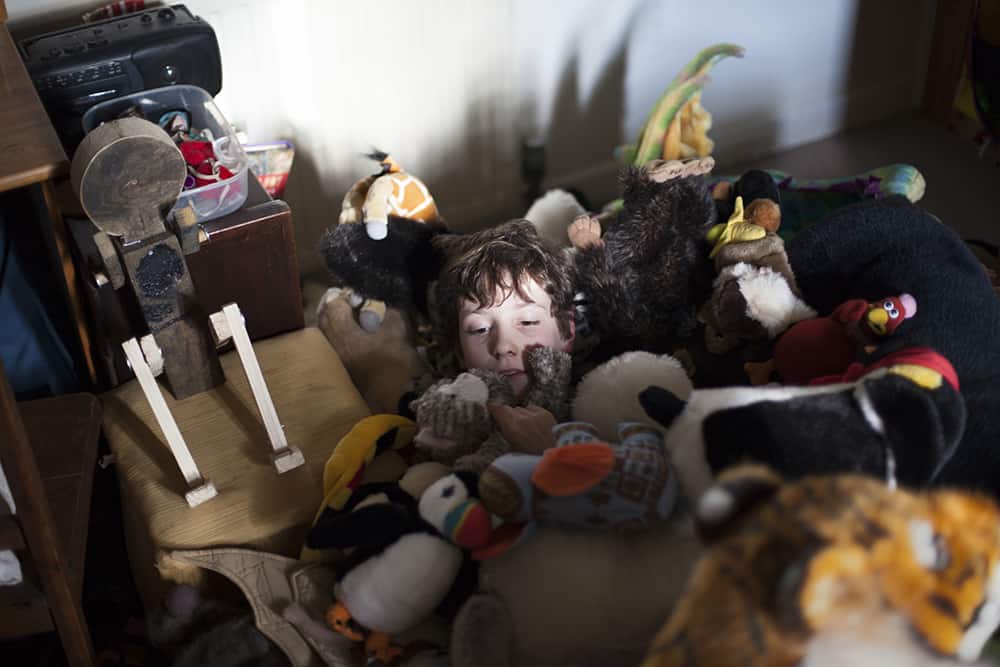
There is a power triangle in social-cause photography, between the photographer, subject, and audience. If one point of the triangle gains, another loses. Alfred had lost power in his own story. We needed to take another approach.
I gave Alfred a GoPro camera and suggested he record home videos that would help him tell his story, in his own time. When he handed me back the camera and his mom and I sat down and watched the footage, we were blown away by Alfred’s level of commitment. His video entries ranged from performing improv-rap songs about his condition, to emotional diary entries about how he feels, to wacky shots of the inside of a grain bucket while his sheep feed from it – did I mention, Alfred loves animals? They make him feel calm, a common trait for people living with autism spectrum disorder.
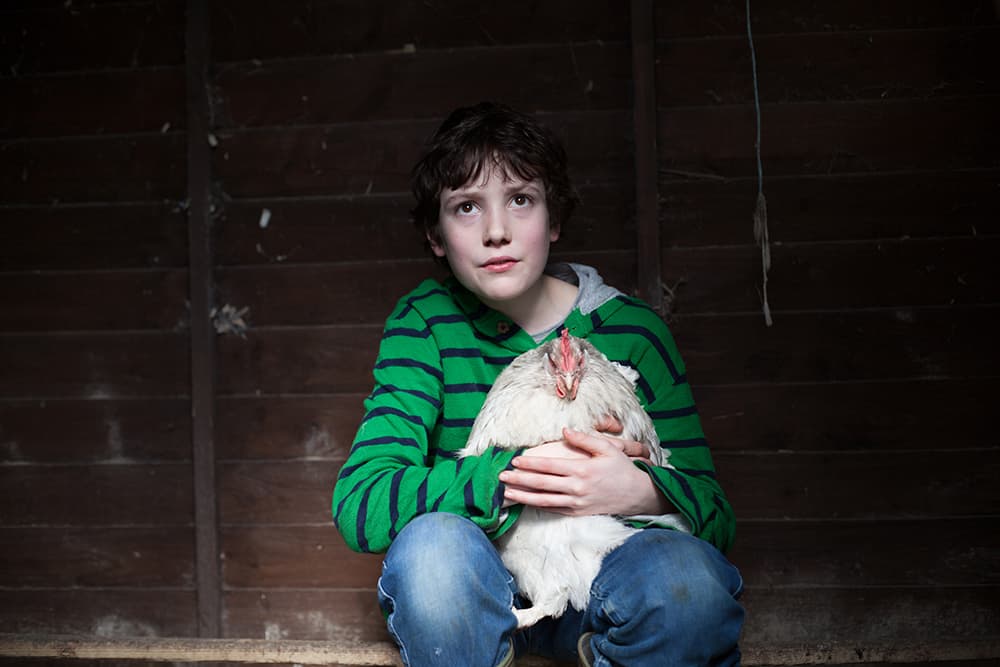
From this moment on, Alfred and I became partners in his story, both committed to his mission: to teach the world about Asperger’s syndrome, through Alfred’s eyes. I should also mention, I’ve never shared the photographs of Alfred’s blow-up, and never will, unless Alfred asks me to.
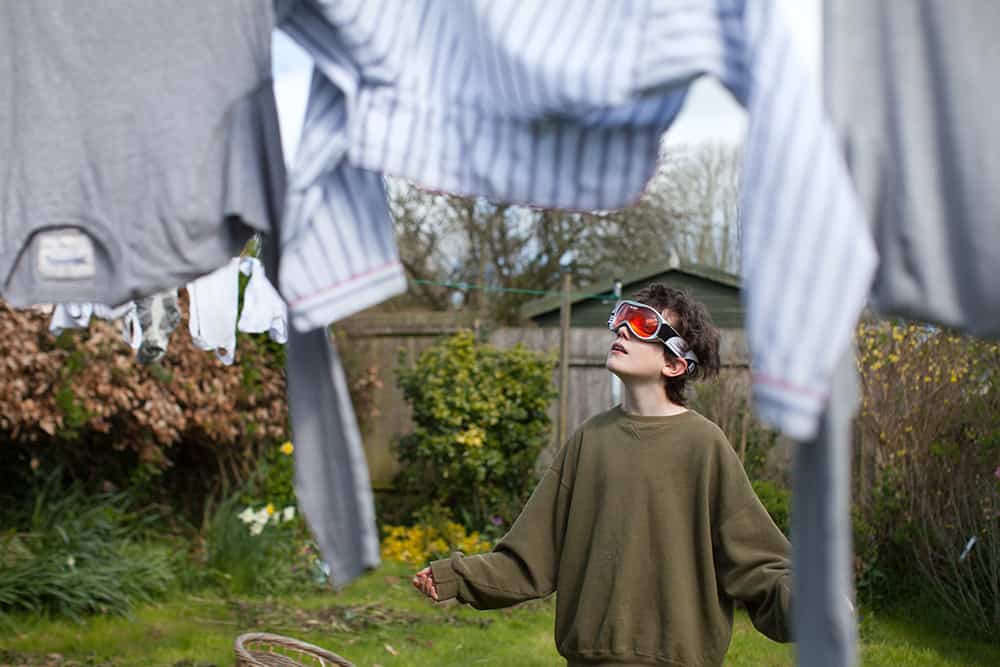
This early collaboration helped shape the photographer I am today, but ethical storytelling isn’t just something for photographers to think about. It’s relevant to fundraisers, communications staff, even leadership. Ethical storytelling has the power to mobilize people, raise funds, and change perspectives.
Through my work as a photographer working with the non-profit sector, I’m grateful to have had many conversations with organizations in Canada about storytelling needs and desires, and have witnessed the struggle many organizations face, through the lack of a marketing budget, resources, or the need to protect the identities of clients whom your story relies upon. Sometimes it’s all of the above and it feels like you’re completely stuck. Though these are the unfortunate realities of working in the non-profit sector, it doesn’t have to be storytelling that takes the biggest hit.
How can you balance the need for adequate funding with effective storytelling so that your potential donors offer greater support for your programming?
How, then, can you balance the need for adequate funding with effective storytelling so that your potential donors offer greater support for your programming? And how are we able to adopt responsible, ethical storytelling that stands apart and is inspirational not only to donors, but to the people within your organization and those that you serve?
I’m not promising all the answers, but I hope that the following four case studies will offer inspiration as to how you can work with visual storytellers on stories that are not only ethically sound, but that convey a powerful message through the storytelling process itself.
Participatory photography
As a visual journalist and professional photographer, I’m hyper aware that how I see the world isn’t necessarily how someone else sees the world. “Positionality” – the sociopolitical context that creates one’s identity in terms of race, class, gender, sexuality, and ability status, and thereby influences one’s understanding of the world – informs everything I do, from how I interact with people to how I shape stories through photographs. This is both the upside and downside of my profession. It means that, because I am trained in photography as a form of storytelling, I am fluent in visual language and understand how to tell stories through pictures. It also means I know how to work with people and make them feel at ease in front of my camera. It’s also the reason I’m frequently interested in collaborating with the very people I’m typically supposed to photograph, inviting my “subjects” – a word I hate – to become the story’s creators.
In June 2021, the Canadian government announced a new federal holiday. The National Day for Truth and Reconciliation would be number 11 of the 94 calls to action implemented, as recommended by the Truth and Reconciliation Commission of Canada in its final report, released in 2015. This milestone day was significant to both Indigenous and non-Indigenous Peoples across (so-called) Canada, and I wanted to produce a story that would reflect this.
I approached Megaphone, a Vancouver-based non-profit street magazine that provides employment opportunities for people experiencing poverty, or who may live with barriers to traditional employment. (Montrealers and Edmontonians may know of L’Itinéraire and Alberta Street News as examples of non-profit street papers.)
I asked Megaphone’s editor, Paula Carlson, if she’d like to work with me on a story that would both observe and reflect on Canada’s new federal holiday, in a way that would be inclusive of Indigenous perspectives. After some to-ing and fro-ing, we landed on the idea that I would hand out disposable cameras to folks attending downtown events, so we could tell the story of that significant day through the lens of those who witnessed it.
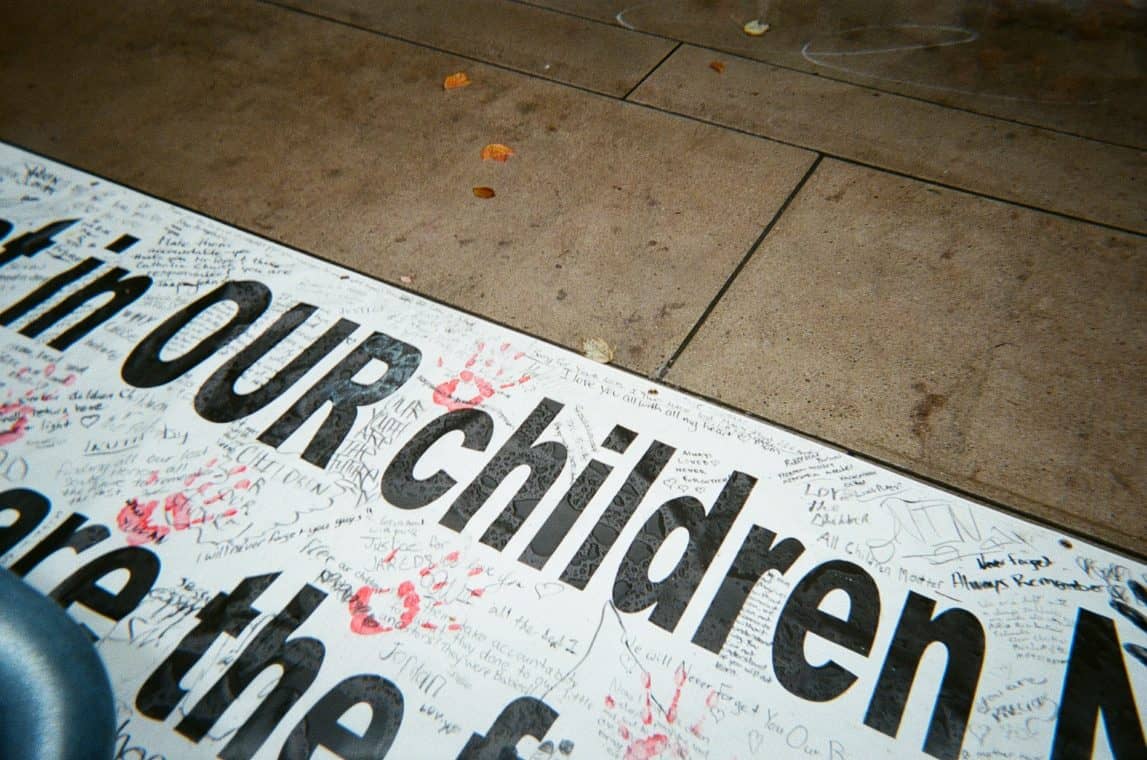
This form of participatory photography was championed by the non-profit PhotoVoice. It’s a wonderful way to build skills within disadvantaged or marginalized communities by using storytelling methods with the hope that such skills will enable individuals to build confidence, represent themselves, and create tools for advocacy and communication.
After developing the film and viewing the images from my photo participants, I followed up and interviewed each of them to ask their thoughts on the day and talk about some of the frames that intrigued me. The piece I wrote alongside the participants’ imagery described the day from their multiple perspectives in a way I couldn’t have achieved on my own. But perhaps a favourite outcome from this project was that the participatory process itself told a story, which was that of Megaphone magazine and its mission: to promote a thriving, equitable society that values all voices.
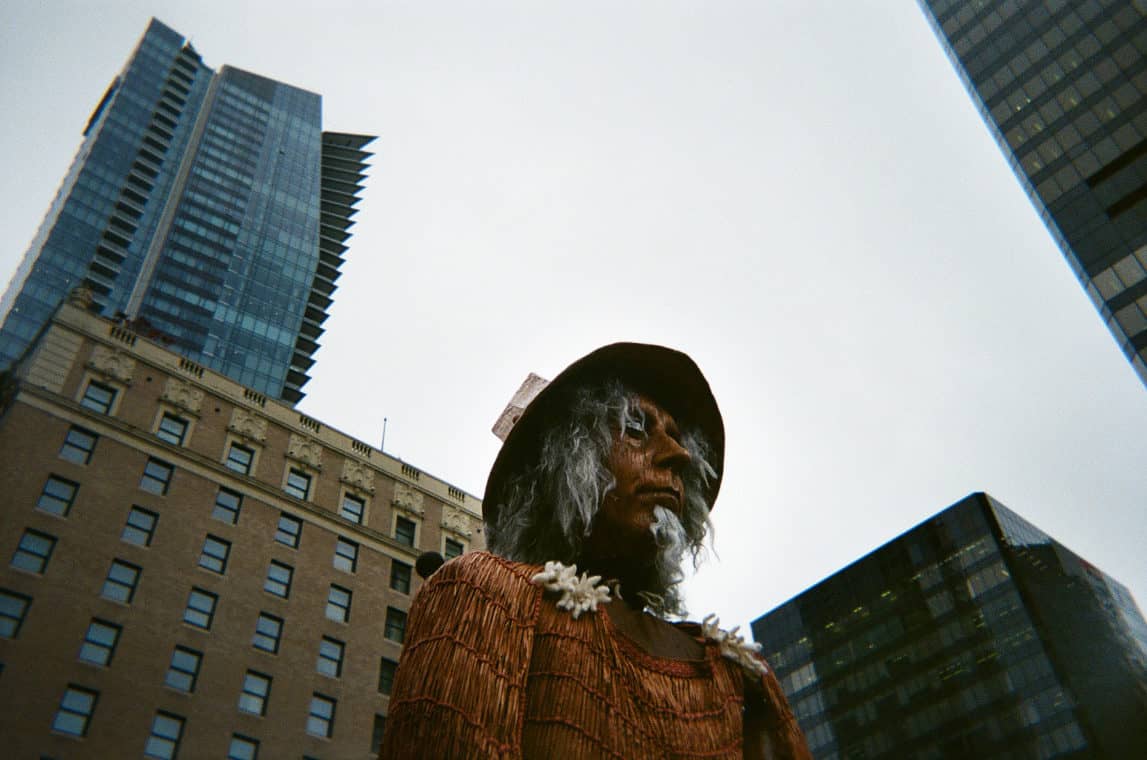
Anonymity and the environmental portrait
An increasing number of refugee claimants enter British Columbia every year to seek protection from persecution, to reclaim their voices, and to rebuild their lives in Canada. Yet, upon seeking asylum, refugee claimants encounter unforeseeable challenges in accessing safe, suitable, and affordable housing.
MOSAIC, a settlement non-profit that serves immigrant, refugee, and migrant communities in Canada, got in touch to ask for help in producing the visuals for a coffee table book, which would be presented to the federal government and would speak to the experiences of refugee claimants in relation to housing issues. The team in charge of the project had already conducted interviews with several refugee claimants, who had gathered the courage to speak out about their experiences of discrimination, stigmatization, and the emotional and language barriers they faced, all while navigating the mostly unaffordable and inaccessible housing market in the Lower Mainland of BC.
I suggested that we produce a series of portraits that would visualize the diverse challenges experienced by refugees in relation to their housing options. As the team had already gathered personal stories from their refugee clients as research for the book, I thought it would be powerful to be able to visualize the people behind some of those stories. The problem, MOSAIC told me, was that their clients’ identities needed to be protected. These were current refugee claimants waiting for a verdict that would determine their status in Canada.
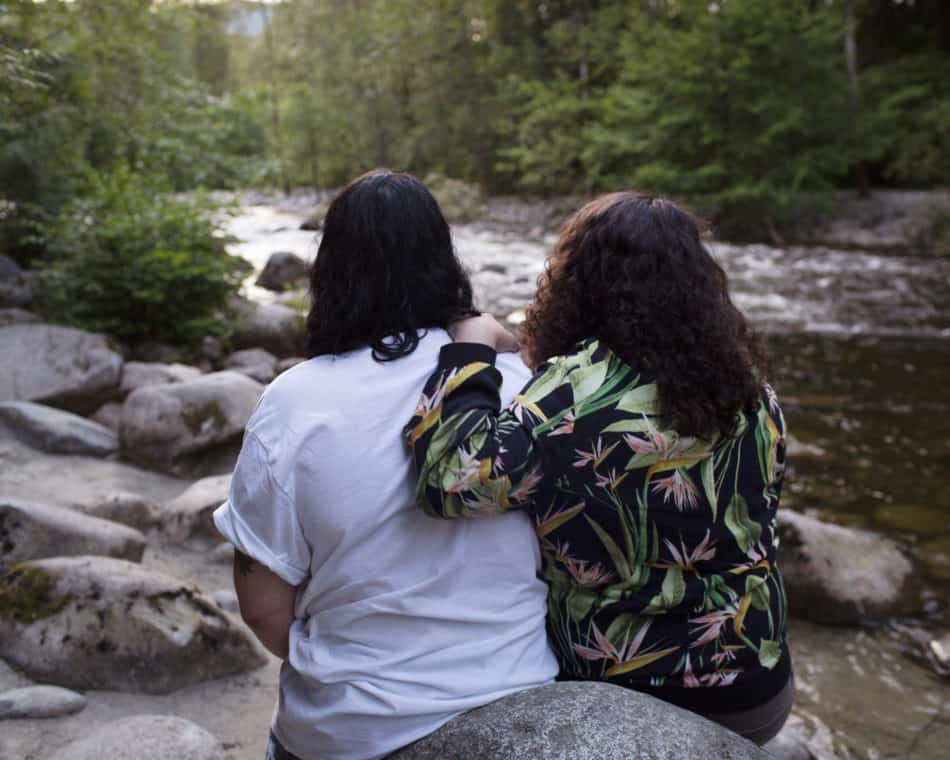
You don’t need me to tell you that a person’s face, their eyes in particular, tells us a great deal about how they feel, while perhaps giving us a sense of their life experience. But we also extract much information from a person’s body language, how they hold themselves, and from their environment.
In photographic theory, the “environmental portrait” is when a person is photographed in a place that tells us something about that person, like their workplace or their home. We see images like this all the time – in the news, in advertising, in movies. If you translate the phrase “It’s not what you said, but how you said it” into the visual language by stating, “It’s not who you frame, but how you frame them,” you get a sense of how you can build a picture of a person’s experience without showing their face and revealing their identity.
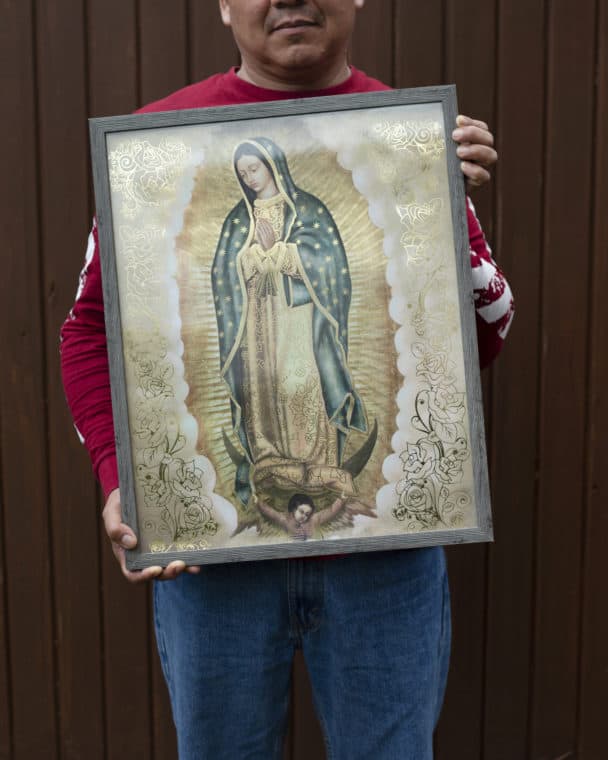
I suggested that we make a series of environmental portraits of the refugee claimants willing to take part, which would speak to their personal journeys and housing experiences while protecting their identities.
Once again, the photographic process becomes a major part of the story, as audiences naturally ask why the faces of the people in these pictures are in every case hidden. Audiences are able to associate anonymity with vulnerability, giving the individual stories, and the cause itself, a heightened sense of urgency while confirming MOSAIC to be an organization that elevates marginalized voices to help advance an inclusive Canada.
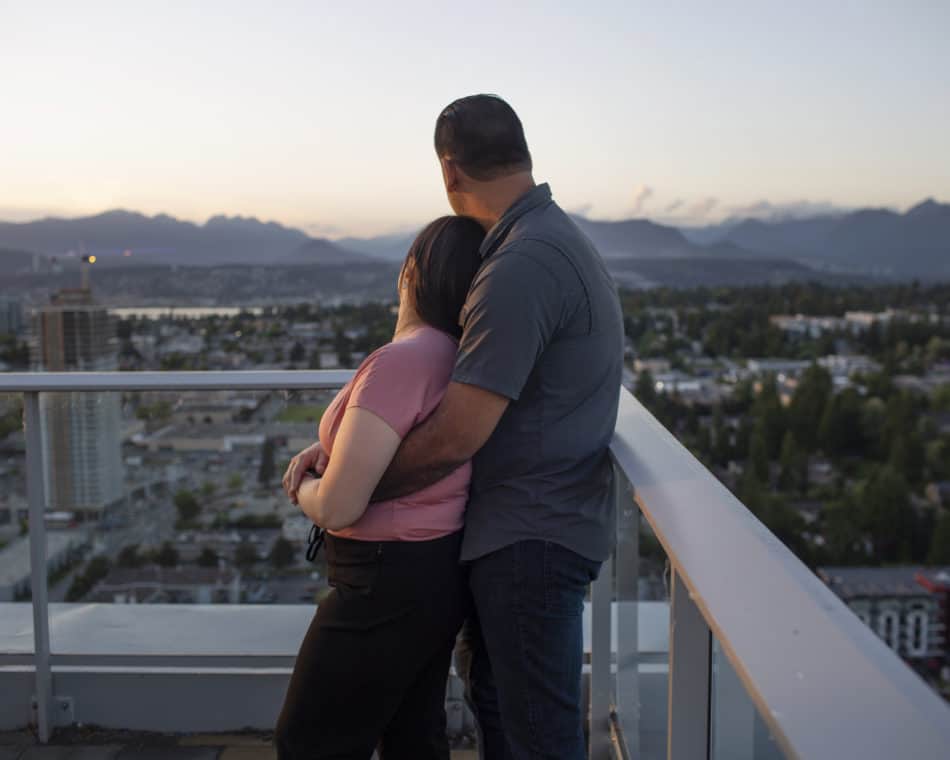
Visualizing modern slavery
Social-cause photographers are driven by stories; we’re story nerds. There are times throughout our careers that we take on “personal projects” that are not commissioned or assigned by anyone. These are stories that are free from funding and influence, where the photographer is able to set the terms, the timeline, and the creative direction.
In 2015, I began a personal project. I had learned through a British friend who was working for Devon and Cornwall Police that the force was shifting its focus and resources away from reducing petty street crime to exposing “modern slavery.” This was in response to the 2015 Modern Slavery Act, which was about to be approved in Parliament. I had never heard the term “modern slavery” before. What did it even mean? Slavery was abolished in 1865, wasn’t it?
There isn’t one definition of “modern slavery,” but it includes human trafficking, forced labour, and sexual exploitation and often involves “debt bondage,” where victims are held not physically, by shackles, but mentally, through psychological control, their documentation and bank accounts often controlled by their exploiter.
I became obsessed with the subject and knew I wanted to make work that would raise awareness of it. I began researching how non-profits were visually representing the issue. I found that an overwhelming amount of the imagery being used involved girls with shackles around their wrists and ankles, or behind jail bars – a huge misrepresentation of what modern slavery is. I started reaching out and asking why these organizations were using imagery that wasn’t reflective of the issue. I was told that the hidden nature of modern slavery makes it nearly impossible to visualize. Either the victim hasn’t been discovered or if they have, they have usually undergone immense trauma, are hugely vulnerable, and must remain anonymous or face being re-trafficked back into the system.
Though I know it’s been done, this was not an occasion I was willing to suggest photographing survivors anonymously. The risk was far too high, as was their level of vulnerability and ability to give consent.
I took a step back. This really was a tough subject to put into pictures ethically. I started reading every case available to me, trying to see what thread I could begin to weave. I realized that in every case where a conviction had been made, I could find out the address where the victim was located by police – addresses all over the country, in every kind of neighbourhood, from the centre of London to the beaches of northwest England.
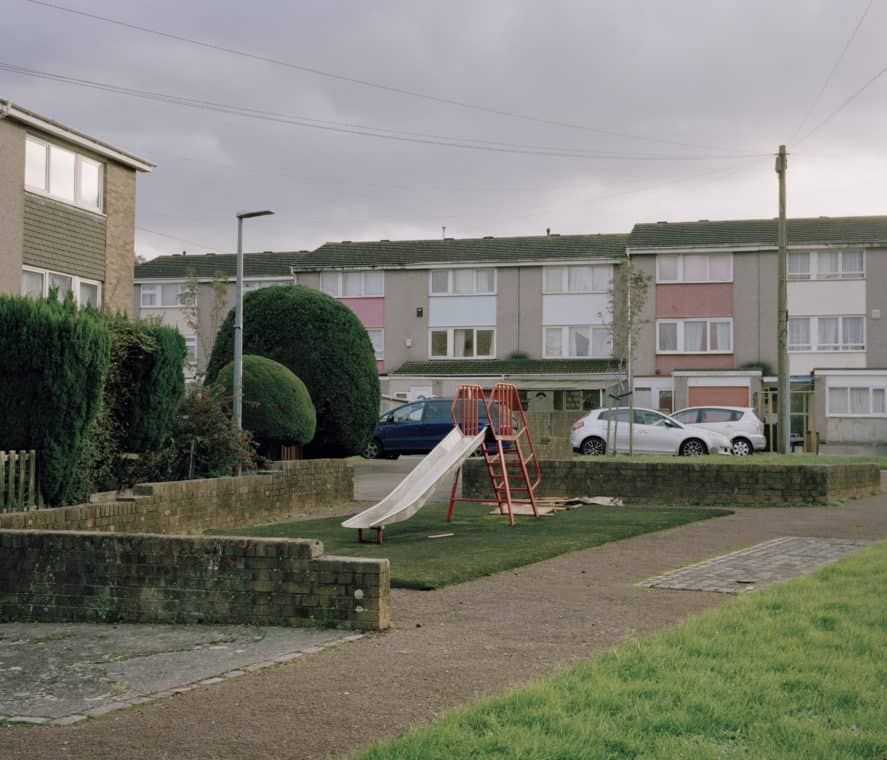
There are no people in these pictures, which speaks to the hidden, unsettling nature of modern slavery (while also solving the ethics issue!). To humanize each landscape, I paired it with the story of what happened there, creating a juxtaposition between the banal landscape and the frightening events that took place. The project, titled The Dark Figure*, was able to shed light on real stories while tackling a complex narrative in a way that’s visual, ethical, and digestible.
I began driving to each location I could find, starting locally and eventually travelling the length of the country to document the neighbourhoods where victims had been found.
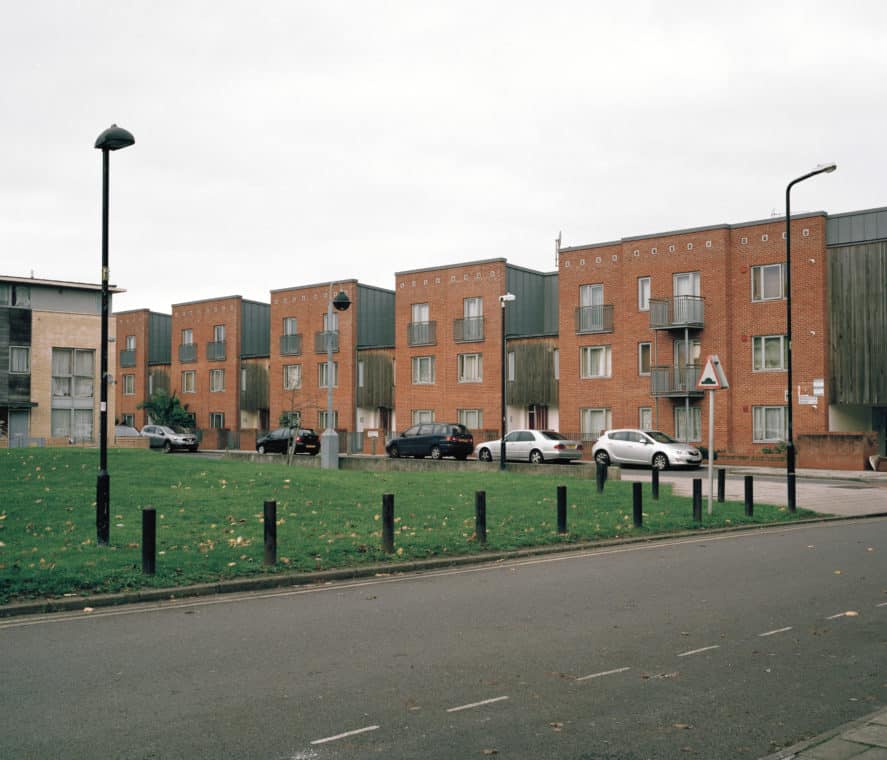
After a UK publisher made the project into a photo book and The Guardian newspaper ran a piece about it, I was approached by Stop the Traffik and A21 – two non-profits working to end modern slavery – about exhibiting the work as part of their campaigns. We exhibited The Dark Figure* at a range of venues in London and Liverpool and hosted panel discussions to raise awareness of the issue, its challenges, and what the public might do to help.
The Dark Figure* has been used to train UK police forces, the Home Office (the government department for immigration and crime), and local councils on how to spot the signs of slavery. Today, the project continues to be published as part of academic reports by the Rights Lab, a department of the University of Nottingham, which explores ethics in visualizing modern slavery.

I’m not suggesting it’s easy to stumble across a visual project that reflects your organization’s mission, but in seeking to partner with a photographer or artist already making work on the subject, you might be able to produce something wonderfully effective with relative ease. That said, please never expect an artist to offer their art for free. Projects like this take hundreds, if not thousands, of hours and are always a financial burden. Artists – photographers or otherwise – should never be expected to give their work away. If you think their work is of value, then please value it fairly.
Embedding a photographer
West Coast Kids Cancer Foundation (WCK) is a non-profit launched in 2017 that supports kids experiencing childhood cancer and their families through a variety of programs. In 2018, they held their first Day Camp, at locations close to BC Children’s Hospital.
When I joined them for this first summer as their visual storyteller, they had a modern website that was full of potential but populated with stock imagery and photos from one event held two years earlier. They needed a photographer who could capture sensitive, authentic moments during their programs, which would tell the story of their organization.
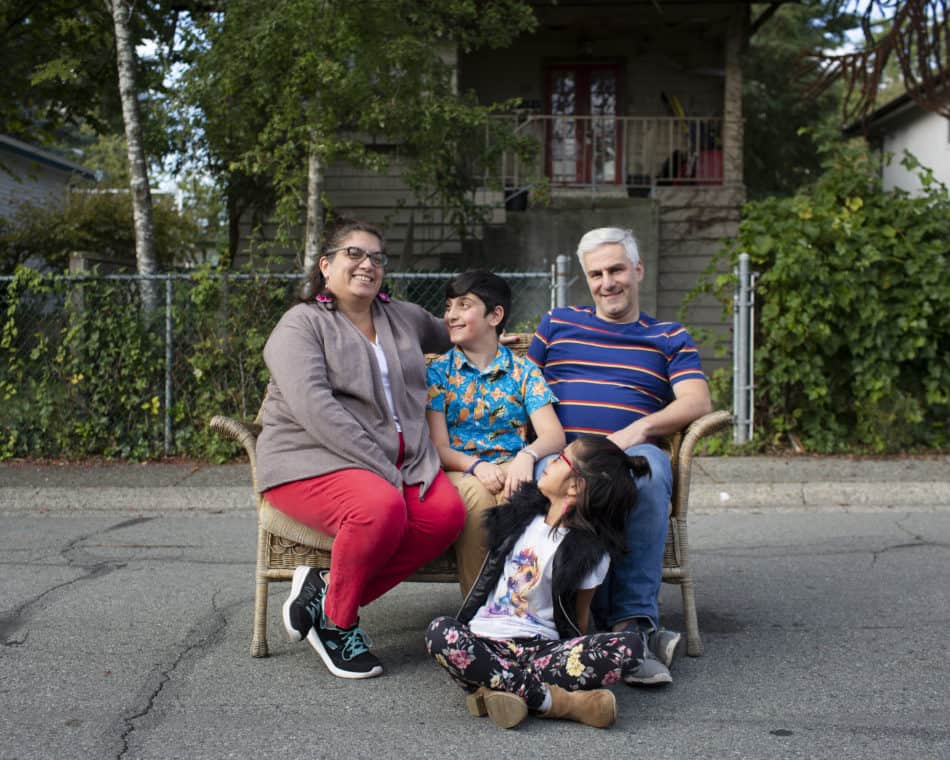
Embedded with them for the entire summer, I was able to build an extensive library of images and video footage from multiple programs. These assets were now owned by, and are unique to, the organization, which no longer needs to worry about which stock image to use and where else it might pop up online.
Spending day after day with the organization, its volunteers, and the wonderful kids, I was able to build trust and knowledge and become part of the furniture. This really is a superpower when it comes to photography. When you reach a point that the people you’re photographing stop noticing you’re there – that’s when the real magic happens.
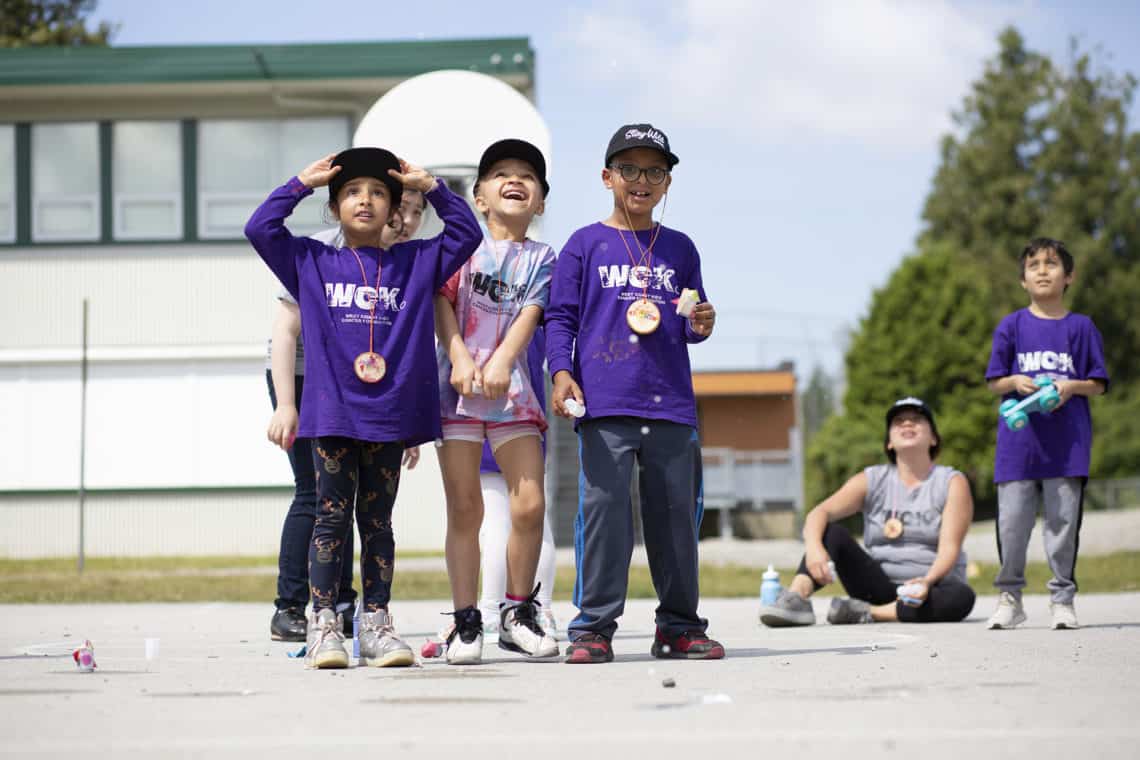
Longer-term collaborations like this allow for new ideas, visions, and opportunities to become realized and to flourish. By the end, the value added is potentially far greater than the contract both parties signed up for at the start.
There is no one way of working with a visual storyteller, but I do believe it is important to work with professionals, particularly in a world flooded with images made by visually illiterate “phoneographers” and – at the other end of the scale – inauthentic stock photography. It’s never subtle. It’s a hollow shortcut that screams “false,” particularly images under the tags “diversity” and “happy family.”
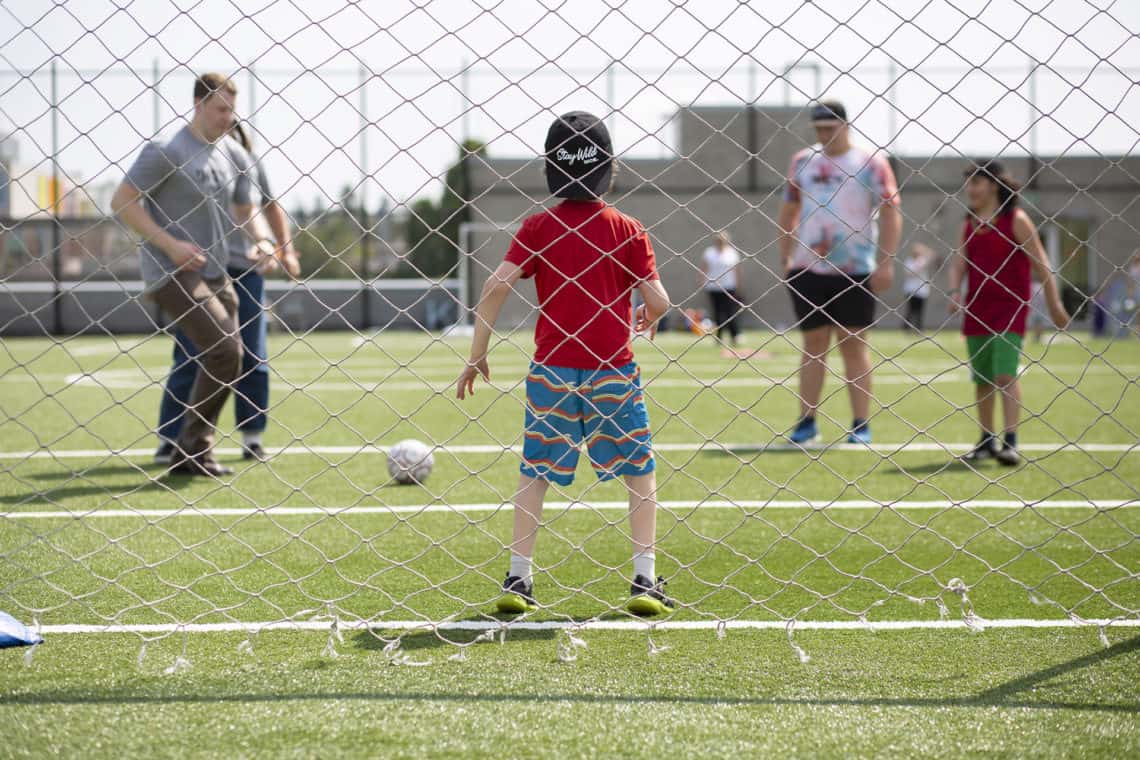
Whether consulting or producing, a creative professional has the opportunity to problem-solve what will make your organization visually unique, offer ideas you hadn’t thought of, and add value to your present and future campaigns.
Visual storytelling has the power to not only pair your words with pictures but empower underrepresented voices while influencing donors, institutions, and policy-makers. It’s a language used by few, but so long as this is the case, there is ample room for change.


